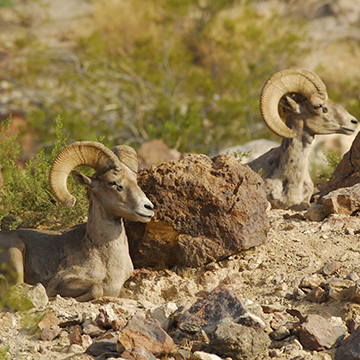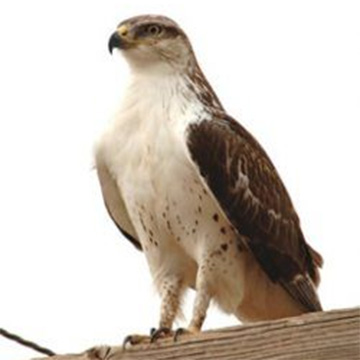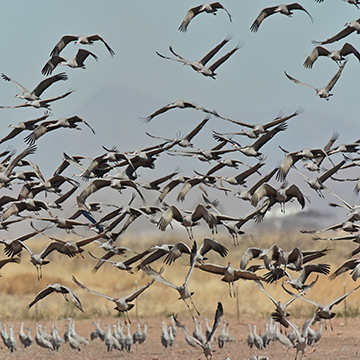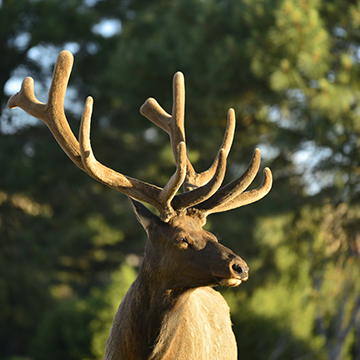Learn to Look – Wildlife Viewing
Knowing more about where to look, how to look and what you are looking for in a given environment can greatly enhance your wildlife viewing experience. People often miss animals that are at hand because they are not well-versed in looking for wildlife. To begin to see more wildlife, you need to focus on using all of your senses. Learning these techniques will make your viewing more rewarding.

Think like wildlife
Learning a little about what wildlife needs to survive gives clues to where you can find them. Different species have different habitat requirements for water, food, shelter and adequate space. Generally, more wildlife activity occurs in the first and last hours of daylight than at any other time of day. Choose the right season because some wildlife can be seen only at certain times of the year.

Look to the edge
Watch the edges of the desert, forest or stream. Most wildlife species spend their time along habitat edges. The border between two habitats is a prime viewing spot. They seek shelter for protection, and use habitat edges for forage. Learning about what a particular animal needs gives clues as to where you can find it.

Be natural
- Relax and make yourself small and unassuming.
- Move slowly in a consistent fashion and make frequent stops.
- Don’t stare! Most animals see this as a threat.
- Wear muted colors and fabrics that don’t ‘rustle’ when you move.
- Use the lay of the land: hills, drainages and gullies provide cover, while skylines leave you easily spotted.
- Use light to your advantage: stand or sit with the sun behind you to stay in the shadows.
- Talk softly only if you must.
- Use all your senses: Not just what you SEE, but what you HEAR, and SMELL.

Be patient
Wildlife viewing requires patience. You can best improve your chances of seeing wildlife by slowing down and moving quietly. Take time to sit and wait for wildlife to appear.

Look in different ways
Scan the landscape with “soft eyes” to see the landscape versus focusing on details.
Look at a distance, then in the foreground and back.
Use peripheral vision to pick up movement.

Use binoculars and other optics
Magnify and focus your vision. Optics allow you to watch from a distance with less risk to humans or animals. Even if you don’t see wildlife, use your optics to scan suitable habitat and you may catch a glimpse of an animal.

Invest in field guides
Field guides can tell you what habitats an animal prefers, when it is active, what it eats and much more. Guides are available for nearly every kind of plant and animal in Arizona.

Follow outdoor ethics
The goal should be to observe normal wildlife behaviors and activity – allow wildlife to be WILD
Respect the land
Pack it in – pack it out
Leave no trace
Leave it better than you found it
Do not harass wildlife
Do not get too close
Do not block them from food, water, or their young
Do not chase the animal(s)
Do not FEED wildlife
Want to Get Involved with Wildlife Conservation?
Volunteer your time, or donate to help us with conserving and protecting our wildlife. When you purchase a hunting or fishing license online, resources go back into wildlife conservation.
donate to wildlife conservation
With your help, we can continue to conserve & protect Arizona’s wildlife.
volunteer for projects
If you have a passion for wildlife and want to help us conserve and protect it, we’d love to have you on our team!
